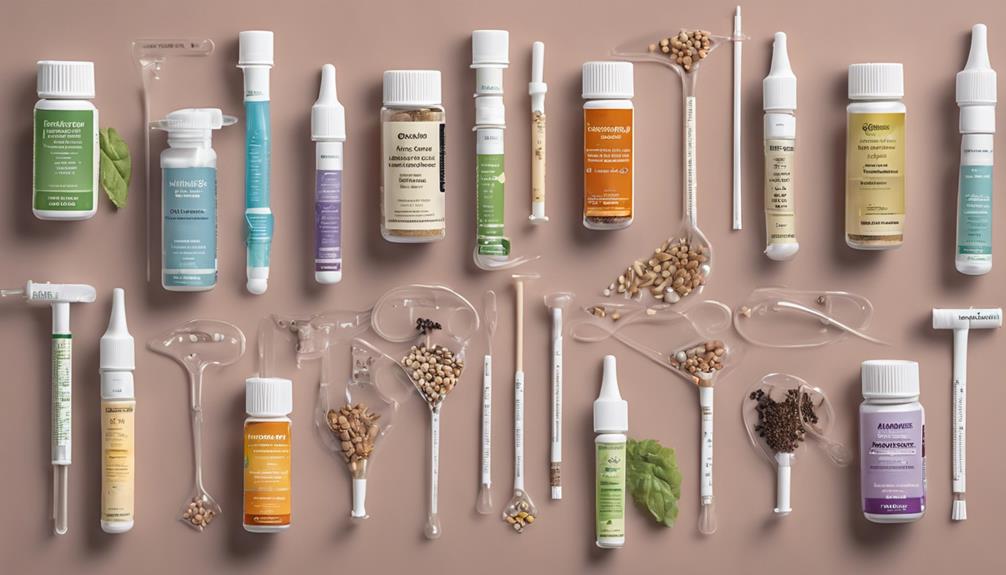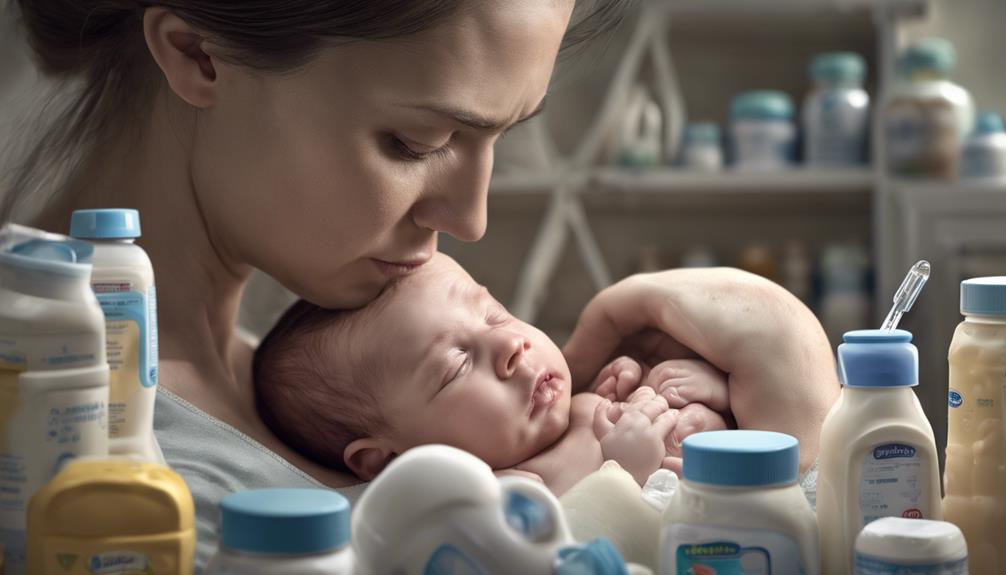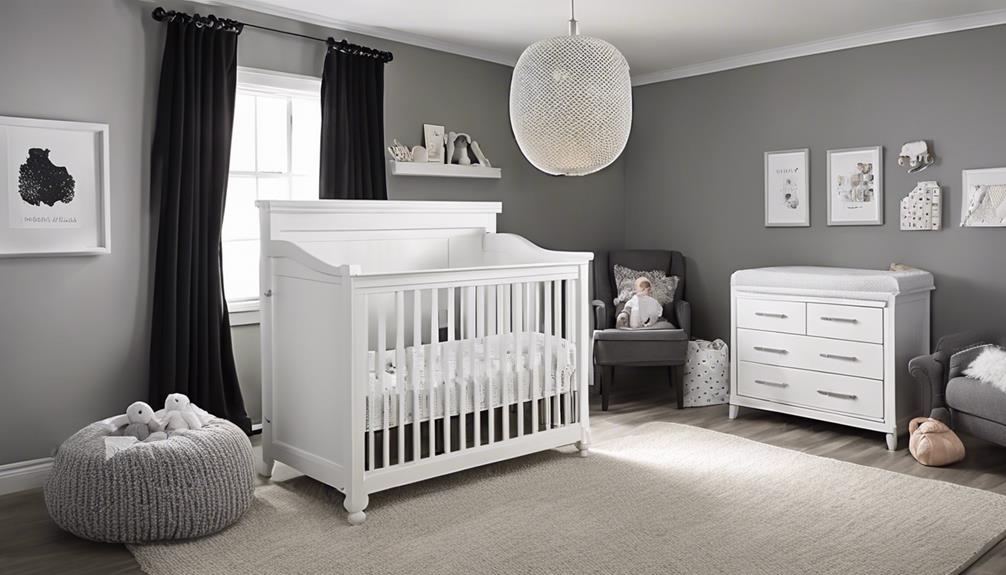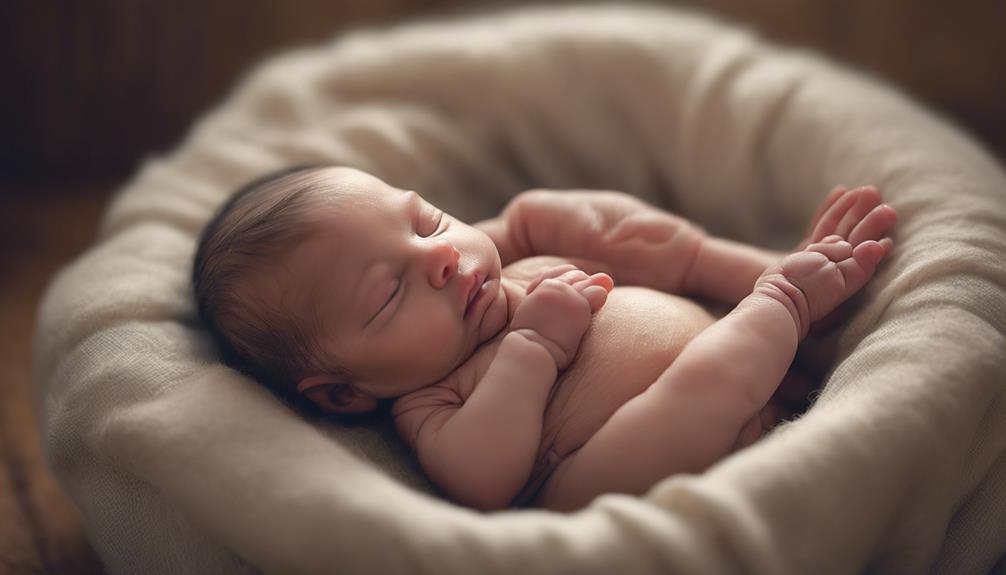When hiccups strike your newborn, it can be a source of concern and discomfort for both you and your little one.
However, there are gentle and effective ways to alleviate these hiccups and bring relief to your baby.
By implementing simple techniques and making small adjustments in your routine, you can help ease their discomfort and promote a more peaceful environment for your newborn.
Stay tuned to discover these nurturing methods and guarantee your baby's well-being.
Key Takeaways
- Newborn hiccups are beneficial for development and usually resolve on their own.
- Soothe hiccups by patting, changing positions, or offering a pacifier.
- Position baby upright after feeding and maintain a calm environment.
- Use pacifiers and practice proper feeding techniques to prevent and manage hiccups.
Understanding Newborn Hiccups
Newborn hiccups, often misunderstood but quite common, are important for your little one's brain and breathing development. These adorable little spasms, caused by diaphragm contractions, play a vital role in helping your baby's respiratory system mature. You may notice these hiccups occurring during or after feeding, which is entirely normal. In fact, frequent hiccups in newborns are often a sign of good health and typical development.
These hiccups, although they might seem bothersome at times, usually resolve on their own within 5 to 10 minutes. While they can be frequent, there's no need to worry as they're a natural part of your baby's growth process. Understanding that these hiccups are a sign of your baby's healthy development can offer reassurance during those moments when they seem to hiccup more than usual. Embrace these little quirks as they contribute to your newborn's overall well-being.
Soothing Techniques for Hiccups

To alleviate hiccups in your newborn, consider employing gentle techniques like patting or rubbing their back to release trapped air bubbles. Sometimes giving your baby a pacifier to suck on can help relax the diaphragm and stop hiccups. Changing your baby's position, such as holding them upright, may also aid in halting the hiccups. Remember, it's generally safe to allow hiccups to resolve naturally within 5-10 minutes, as this is common in newborns.
Preventing overfeeding and creating a calm feeding environment can also play a role in reducing hiccups in your baby. By paying attention to how much your newborn is consuming and ensuring feedings are peaceful, you can help minimize the occurrence of hiccups. If hiccups persist or are causing distress to your baby, consulting with a healthcare provider can provide further guidance on managing them effectively. Trust your instincts and remember that gentle approaches can often bring relief to your little one.
Positioning for Hiccup Relief
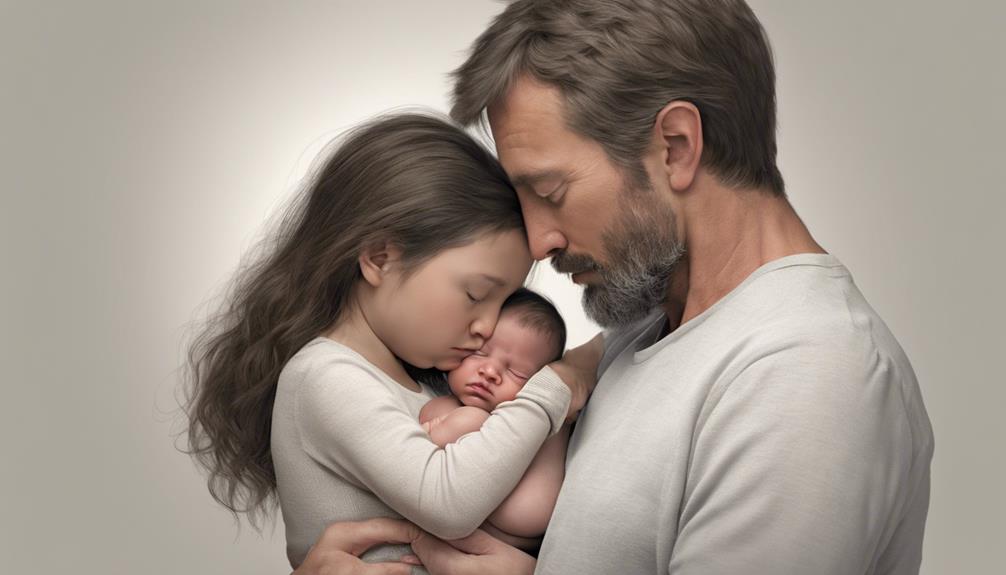
If your baby is experiencing hiccups, consider adjusting their position to aid in relieving the discomfort they may be feeling. Holding your baby upright after feeding can help harness gravity to facilitate digestion, potentially easing hiccups. Similarly, placing your baby on their back in a serene environment can reduce stimulation and assist in stopping the hiccups. Ensuring a calm and relaxed atmosphere during feeding can also play a role in preventing hiccups altogether. Additionally, gently patting or rubbing your baby's back can help release trapped air, diminishing the intensity of the hiccups. Remember to avoid sudden movements or jostling, as this can exacerbate discomfort and hinder the natural resolution of hiccups. By being mindful of your baby's positioning and employing gentle techniques, you can provide relief and comfort during episodes of hiccups.
| Positioning Tips | Description |
|---|---|
| Upright after feeding | Uses gravity to aid digestion and potentially alleviate hiccups |
| On their back | Provides a calm environment to reduce stimulation and stop hiccups |
| Calm and relaxed feeding | Prevents hiccups by maintaining a serene atmosphere during feeding sessions |
| Gentle patting | Helps release trapped air and lessens the intensity of hiccups |
| Avoid sudden movements | Prevents discomfort and allows hiccups to resolve naturally without agitation |
Using Pacifiers and Feedings
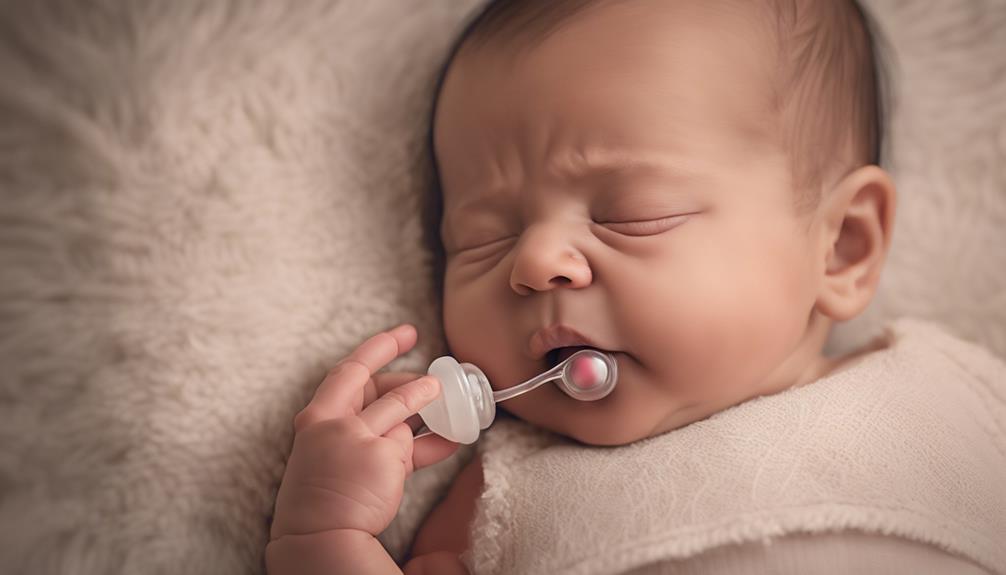
When soothing your baby's hiccups, consider utilizing pacifiers strategically after feedings to help regulate breathing and reduce hiccup occurrences. Offering a pacifier to your newborn can help relax the diaphragm and potentially stop hiccups. The sucking action on a pacifier may assist in regulating your baby's breathing, decreasing hiccup episodes.
Using a pacifier after feedings could aid in managing and preventing hiccups in newborns. These tools are safe and effective for comforting and calming your baby during hiccup episodes. By incorporating pacifiers into your routine, you can provide a soothing method to help your newborn relax and ease hiccup discomfort.
Remember to offer the pacifier gently to your baby after feeding sessions to help them soothe, relax, and manage their hiccups effectively. Trust in the pacifier to assist in calming your little one and regulating their breathing post-feeding.
Preventing Future Hiccups
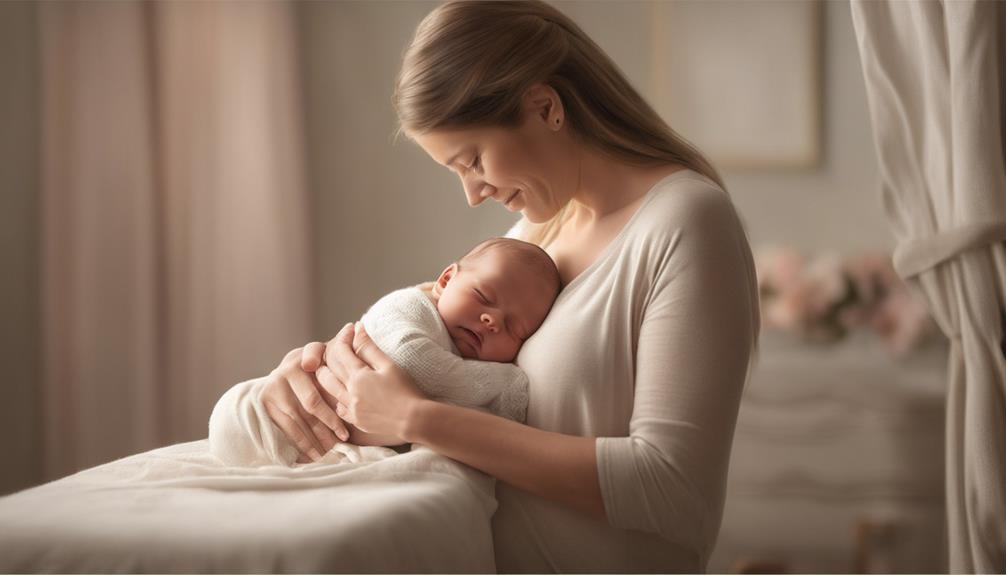
After utilizing pacifiers and feedings to help manage your baby's hiccups, focus on creating a calm environment and employing proper burping techniques to prevent future occurrences. To prevent hiccups in babies, it is vital to feed them in a serene atmosphere. Make sure there are minimal distractions and noise during feeding times to promote relaxation and aid in digestion. Additionally, incorporating proper burping techniques during and after each feeding can greatly reduce the likelihood of hiccups. Holding your baby upright for about 10-15 minutes after feeding can also help in the digestion process and minimize hiccups. Opt for smaller, more frequent feedings to prevent overeating, which can lead to hiccups. Avoid rush feedings and allow your baby to eat at a comfortable pace, promoting better digestion and reducing the chances of hiccups. By following these tips, you can help prevent future hiccups in your little one.
| Preventive Measures | Description | Effectiveness |
|---|---|---|
| Feed in a calm environment | Minimize distractions during feedings | High |
| Proper burping techniques | Burp baby during and after feedings | Moderate |
| Opt for smaller, more frequent feedings | Prevent overeating | High |
Frequently Asked Questions
How Can I Soothe My Newborn's Hiccups?
You can soothe your newborn's hiccups by gently patting or rubbing their back, offering a pacifier to relax their diaphragm, adjusting feeding positions, and avoiding overfeeding. Let hiccups resolve on their own within 5 to 10 minutes.
Is It OK to Lay Baby Down With Hiccups?
Absolutely! It's totally fine to lay your baby down with hiccups. Hiccups are harmless and won't affect their breathing. If they persist or cause distress, reach out to your pediatrician for guidance.
What Positions Help Newborn With Hiccups?
When your newborn has hiccups, try holding them upright against your chest for comfort. Supporting their head and gently rocking them can soothe the diaphragm. These positions may help alleviate hiccups and bring relief.
Do Hiccups Mean Baby Is Full?
When your baby hiccups, it doesn't necessarily mean they're full. Hiccups are often just a normal part of their development. Enjoy these little moments, knowing that it's not always about hunger.
Conclusion
Now that you know how to help ease your newborn's hiccups, you can provide comfort and relief when they occur.
By using gentle techniques like burping, holding upright, and creating a calm environment, you can soothe your baby and prevent future episodes.
Remember, hiccups are common in newborns and usually nothing to worry about. Trust your instincts and seek medical advice if needed.
Your baby will be hiccup-free in no time!

